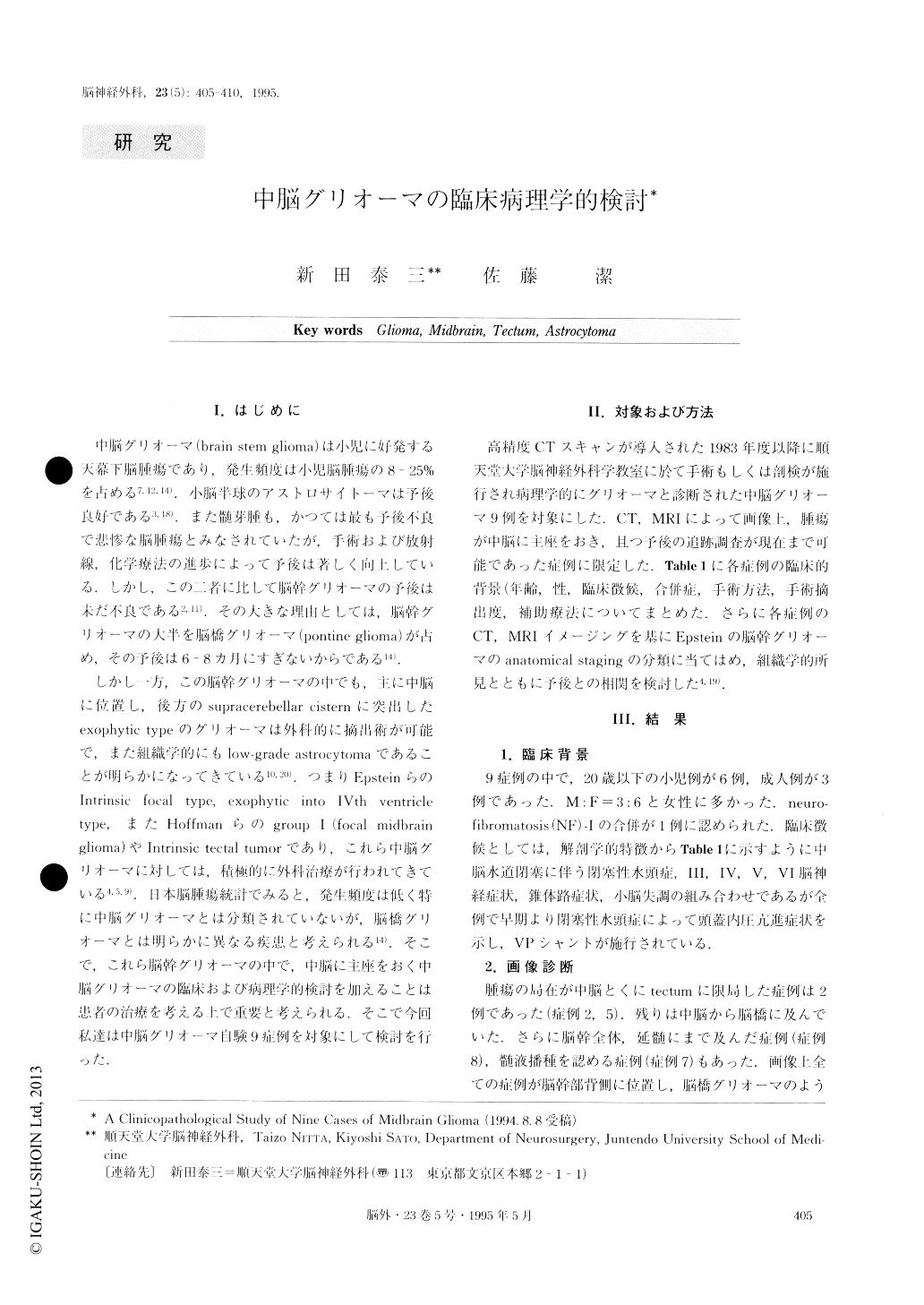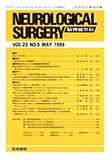Japanese
English
- 有料閲覧
- Abstract 文献概要
- 1ページ目 Look Inside
I.はじめに
中脳グリオーマ(brain stem gliema)は小児に好発する天幕下脳腫瘍であり,発生頻度は小児脳腫瘍の8-25%を占める7,12,14).小脳半球のアストロサイトーマは予後良好である3,18).また髄芽腫も、かつては最も予後不良で悲惨な脳腫瘍とみなされていたが,手術および放射線,化学療法の進歩によって予後は著しく向上している.しかし,この二者に比して脳幹グリオーマの予後は未だ不良である2,11).その大きな理由としては,脳幹グリオーマの大半を脳橋グリオーマ(pontine glioma)が占め,その予後は6-8カ月にすぎないからである14).
しかし一方,この脳幹グリオーマの中でも,主に中脳に位置し,後方のSupracerebellar cisternに突出したexophytic typeのグリオーマは外科的に摘出術が可能で,また組織学的にもlow-grade astrocytomaであることが明らかになってきている10,20),つまりEps teinらのIntrinsic foual type, exophytic into Ⅳth ventricletype,またHoffmanらのgroup Ⅰ(focal midbrain glioma)やIntrinsic tectal tumorであり,これら中脳グリオーマに対しては,積極的に外科治療が行われてきている4,5,9).日本脳腫瘍統計でみると,発生頻度は低く特に中脳グリオーマとは分類されていないが,脳橋グリオーマとは明らかに異なる疾患と考えられる14).そこで,これら脳幹グリオーマの中で,中脳に主座をおく中脳グリオーマの臨床および病理学的検討を加えることは患者の治療を考える上で重要と考えられる.そこで今回私達は中脳グリオーマ自験9症例を対象にして検討を行った.
The majority of brain stem gliomas tend to occur during childhood and arise in the pons. The prognosis of these typical pontine gliomas is almost invariably bad. In contrast, there exists a group of benign brain stem gliomas, mostly arising from the midbrain and areamenable to surgical resection. They are often low-grade astrocytomas and are associated with better prognosis.We summarized nine cases of intrinsic mid-brain gliomas and their clinical behavior was analyzed by radioimagings and histopathological examination. They were classified from CT images according to Stroink et al. and from anatomic staging by Epstein.The result showed that 5 in 9 cases were so called, “focal midbrain gliomas”. That is to say, the tumor arose from the tectal plate or the tegmentum of the mesencephalon and expanded dorsally, but did not in-vade the surrounding neural tissues. Three focal mid-brain gliomas in childhood were well demarcated and surgically resectable. Histologically, tumors were astrocytomas and were associated with favorable pro-gnosis. However, two focal midbrain gliomas in adult-hood were anaplastic astrocytoma and the prognosis was poor, even though they appeared similar shown on radioimaging study. The overall survival rate of pa-tients with midbrain glioma was longer than that of pa-tients with glioma in the cerebral hemisphere. From these results, it was concluded that a specific group of intrinsic, focal midbrain gliomas can be classified into pediatric benign gliomas and adolescent malignant ones. A further number of cases should be studied to clarify this hypothesis.

Copyright © 1995, Igaku-Shoin Ltd. All rights reserved.


